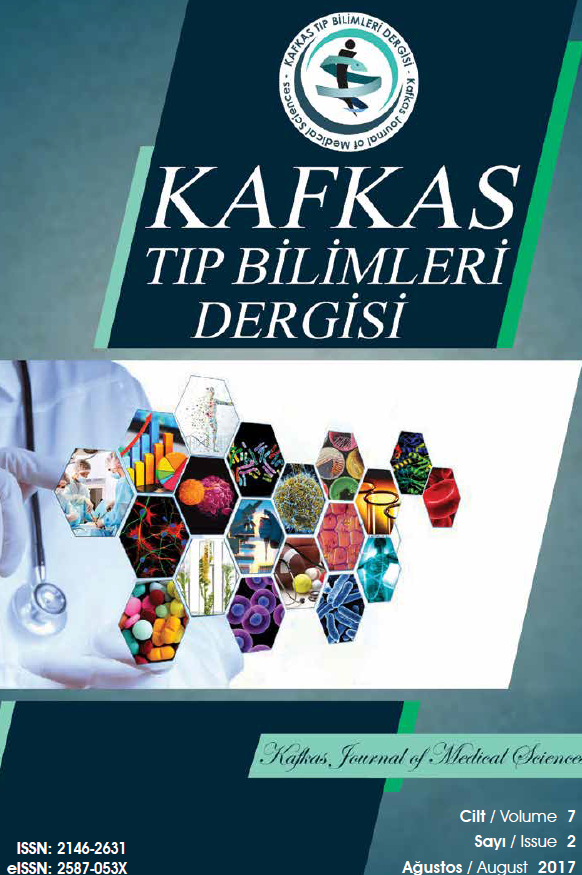Kırıkçı ve Çıkıkçılar Tarafından Tedavi Edilen Hastaların Özellikleri: Bir Gözlemsel Klinik Çalıșma
Kırık, kapalı kırık, Geleneksel tıp, Görsel analog skala, Şarlatanlık
The Characteristics of the Patients Treated by the Bonesetters: An Observational Clinical Study
Fracture, Occult fracture, Traditional medicine, Visual analogue scale, Quackery,
- ISSN: 2146-2631
- Yayın Aralığı: Yılda 3 Sayı
- Başlangıç: 2011
- Yayıncı: Kafkas Üniversitesi
Endüstriyel press makinesine sıkışmaya bağlı gelişen ön kol kompartman sendromu
Kemal Gokkus, Murat Saylik, Ahmet Turan Aydin
Hastane içi kardiyak arrestler ve resüsitasyonlarındaki deneyimlerimiz
Hakan OĞUZTÜRK, Muhammet Gökhan TURTAY, Yusuf Kenan TEKİN, Ediz SARIHAN
Cantrell Pentaloji Ve Fokomelia Birlikteliği Saptanan Olgunun Antenatal Tanısı
Melek ÇİÇEK, Kahraman Ülker, Abdülaziz Gül, Kemal Kösemehmetoğlu, Bahattin Balcı
Halosperm tekniği ile bakılan DNA fragmantasyon oranının IVF-ICSI sonuçları üzerine olan etkisi
Mustafa KARA, Nurettin TÜRKTEKİN, Turgut AYDIN
Sigara İçmek Üniversite Öğrencilerinin Fiziksel Aktivitesini Etkiliyor mu?
Ferhan SOYUER, Demet ÜNALAN, Ferhan ELMALI
Sporcularda Sigaraya Bağlı Olușan Oksidatif Hasar Üzerine A ve E Vitaminlerinin Koruyucu Etkileri
Nevzat DEMİRCİ, Ebru BEYTUT, Nadide Nabil KAMİLOĞLU
Gebelikte elektrokonvülsif tedavi
Yüksel Kıvrak, Kahraman Ülker, Süleyman Gündüz, Mustafa Arı
Kırıkçı ve Çıkıkçılar Tarafından Tedavi Edilen Hastaların Özellikleri: Bir Gözlemsel Klinik Çalıșma
